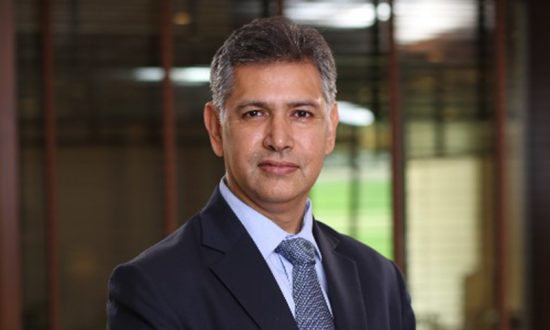Mr. Sumit Puri is the Co-Founder of Synergy Digital Solutions and Executive Director of Aura Data Solutions. He is an experienced IT Leader with over 27 years of work experience in conceptualizing digital enterprise strategy, enabling governance and operational process transformation in leading organizations in Asia. Prior to his stint as Managing Director, Synergy Digital Solutions, he has played diverse senior global and regional IT Leadership roles like Group CTO, Evercare Group, CIO, Max Healthcare, CIO at Prudential Corporation Indonesia, Senior Vice President at ICICI Prudential, Global Digitization Leader at GENPACT and Senior management consultant at PricewaterhouseCoopers. He is LEAN, LOMA, Six Sigma and PMP certified, has strong leadership and governance skills besides huge passion for innovation.
Sumit is a Mechanical engineer and completed his MBA from IIM, Bangalore in 1998. He is an advisory Board member of several startups, regular speaker and panelist at conferences across Asia Pacific region on enterprise digital strategy and governance and has won several international awards across Asia Pacific region.
In a recent interview with CXO Outlook, Mr. Puri sat down and shared his thoughts on current trends shaping the IT industry, take on customer centricity, a change he would like to alter in this industry, and a lot more. Check out the interview excerpts as follows.
According to you, what are the current trends transforming the IT industry? Are there any tech trends that are here to stay for good?
The key trends which are transforming IT industry are artificial intelligence, blockchain, big data, 5G network and cloud migration. AI and Big Data are required by forward thinking enterprises to enhance the depth and quality of business insights and stay ahead of the enterprise performance curve in this ultra- competitive world. Blockchain technologies can help transform the world of payments, enhance workflows, integrity and trust of transactions and integrate various industry sectors and processes seamlessly. Cloud and 5G network connectivity can help commoditize technology infrastructure and radically change the way we access information and connect to the world.
These technologies need to be meshed seamlessly with the right mix of people and processes with future ready enterprises embedding and institutionalizing their usage as per their organizational fabric and context.
As a leader, what lessons and insights have you carried away from this COVID experience?
The COVID-19 pandemic has significantly accelerated the pace of digital transformation and adoption across enterprises with remote work, digital health, online collaboration and conferences etc., becoming the order of life. The key lessons to be learnt are that we are only limited by our imagination in usage of technology. Who would have thought a couple of years ago that working from home and virtual work could prove sometimes even more productive than working in physical offices? Similarly, the importance of simplicity in user interface design and ease of use in technology applications was demonstrated in the way usage of Zoom online conferencing catapulted during the pandemic.
Also, the need for corporates and employees to enhance their immunity and start giving importance to mental wellness besides physical health was also established very distinctly. Those organizations which cared for their employees and stood by them during trying times are the ones which will reap the benefits of renewed loyalty and enhanced productivity where employees will serve the organization from their hearts rather than only with their hands and minds.
Today, more people are turning towards social media. How can brands leverage technologies like AI, machine learning, blockchain, and others to improve their social media presence?
With the advent of social media, primacy of traditional media channels and billboards in physical geographic locations has indeed become history. In this hyper connected age, the entire world could potentially be your playground if we can market and communicate our value proposition well.
It is imperative that brands formulate an enterprise wide digital strategy on social media and establish an effective digital presence in the channels accessed by their target customers. By leveraging AI, machine learning and blockchain, they can deepen their understanding of consumer behavior and straddle across the customer journey landscape. They could also use AI and machine learning to further understand customer trends and behaviors, create a continuous feedback loop, and tailor their offerings to evolving customer preferences.
What is your take on customer centricity with design thinking? Are you implementing it in your organizations?
Design thinking is critical to customer centricity and needs to be embedded from the beginning in customer facing products and applications offered by the enterprise. For starting design thinking, we need to understand customer personas, customer journey mapping, and key pain areas. With design thinking supported by a robust backend infrastructure, the value proposition becomes very powerful.
I have implemented design thinking in the last few years in several organizations with excellent results on user adoption. In fact, at Synergy Digital Solutions, we advise clients on how to inculcate design thinking as part of digital transformation agenda, and how we can create composite teams of digital native employees and functional sponsors with specialized design partner organizations to supplement the conventional IT service teams which has yielded excellent results.
What is the one change that you would like to make in the current business industry? Please elaborate.
The one key change I would be keen to move away from is the conventional functional silos in organizations and inculcate a culture of shared goals across the organization. This would help build high levels of employee alignment across levels and significantly enhance overall enterprise performance.
What would be your piece of advice to the budding business leaders?
I would like to advise them to not be fearful of change but to embrace it. Technology is changing rapidly and can transform the way we work, live and operate. However, technology is not an end in itself – along with technology, we need to enable and incentivize the right people, and process ecosystem which would deliver seminal long-term results for the organization.


